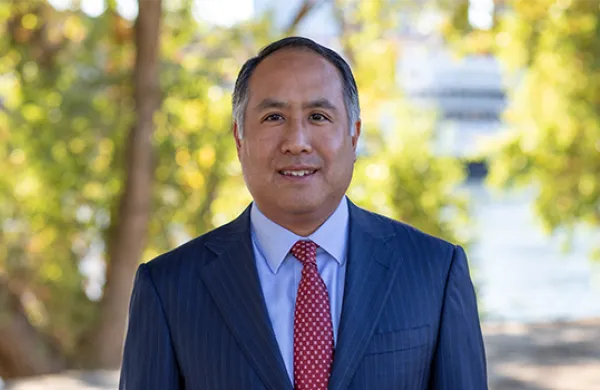The California State Teachers’ Retirement System wants to keep investments and politics separate, but its plans to cut its portfolio’s greenhouse gas emissions in half by 2030 could make that difficult.
Last week the board of CalSTRS announced a new target allocation to a low-carbon index that would help it reach its goal of net-zero carbon emissions by 2050. In the midst of an environment fraught with mounting political pressure, Christopher Ailman, CalSTRS’ chief investment officer, called the anti-ESG movement “disheartening” and reiterated in a call that he believes the investment world and the political stage are two separate entities.
In recent months, Republican lawmakers have come out against the environmental, social, and governance movement, with many politicians in red states touting vehement anti-ESG rhetoric. In Florida, governor Ron DeSantis recently announced that the state’s pension plans can no longer consider ESG in their investment processes. Last month, several treasurers and comptrollers from red states signed a letter from West Virginia’s treasurer barring the state’s institutions from working with banks that don’t support the coal industry.
“That’s politics, which is a different sphere and world,” Ailman said. “In the investment world, [ESG] has been widely discussed and understood for years.”
Instead, CalSTRS sees ESG and net-zero goals as just another method of smart investing. “If you get rid of the [ESG] initials, what it really means is long-term business risk,” Ailman said. “Our job is to find reward and return that is commensurate with the risk.”
Last September, the CalSTRS’ board approved a four-part framework that would chart the pension’s path to net-zero. Last week’s news is a continuation of this pledge, a “further refinement” of the pension’s movement toward net-zero emissions, Ailman said.
CalSTRS is starting with a 20 percent target allocation to the MSCI ACWI Low Carbon Target index in its public equity portfolio, and it plans to slash carbon emissions from the rest of its portfolio to reach an earlier goal of cutting 50 percent of emissions from its portfolio by 2030.
In its most recent move, the investment team started with its public equity portfolio, primarily because of the greater availability of data. The fund also has plans to invest in private equity funds that are pursuing “climate solutions opportunities,” said Kirsty Jenkinson, the investment director for the sustainable investment and stewardship strategies team at CalSTRS. The pension plan has $47 billion in private equity investments as of July 2022.
Ailman and Jenkinson both reiterated that CalSTRS isn’t advocating complete divestment from the energy sector. Instead, the low-carbon index is focused on companies that burn fossil fuels and emit low levels of emissions. “This is not just a focus on oil companies and oil stocks. We will continue to own those in our portfolio,” Ailman said.







